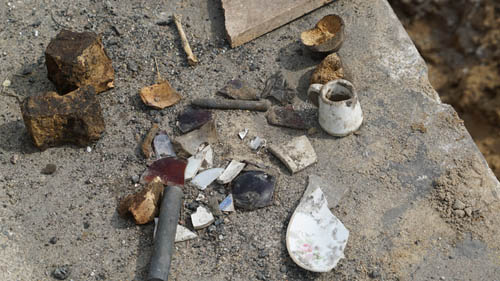An archaeological survey conducted this summer in Minneapolis’s Royalston neighborhood for the Southwest LRT Project has illuminated parts of the city’s past from the late 1800s and early 1900s.
 Federal and state law require investigation of LRT construction’s potential effect on archaeological resources in the project area. The sites examined were under the roadway and median on Royalston Avenue near the Minneapolis Farmers Market, which is now reopened to traffic.
Federal and state law require investigation of LRT construction’s potential effect on archaeological resources in the project area. The sites examined were under the roadway and median on Royalston Avenue near the Minneapolis Farmers Market, which is now reopened to traffic.
Archaeologists hired by the project used a variety of methods, including such traditional techniques as manual excavation, the digging of trenches, and shovel tests. The team also used ground-penetrating radar to identify possible underground artifacts for clues to the lives of the area’s former residents, who were from Russia and other countries in Eastern Europe. The team found everyday items such as soup bones, beer bottles, and buttons.
The neighborhood was originally a planned development where upper-middle-class residents lived. By the turn of the 20th century, those residents had moved on and immigrant communities moved in.
Archaeologists studied this latter period after earlier soil borings turned up pieces of plates used in Passover Seder services and other household items, prompting the excavation.
Now that the artifacts have been recovered, the team will catalog and store them at the Minnesota Historical Society. The plan is to develop interpretive signs that will be placed at the future Royalston Avenue/Farmers Market Station.
More information